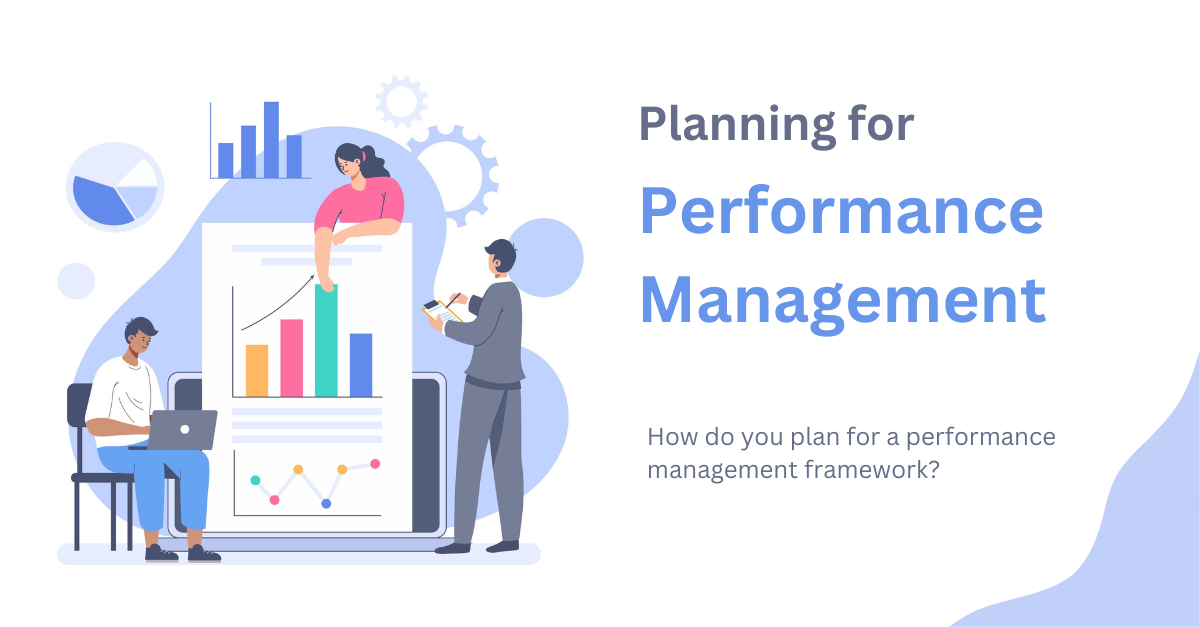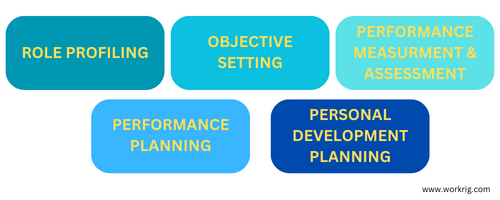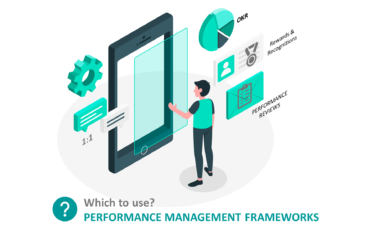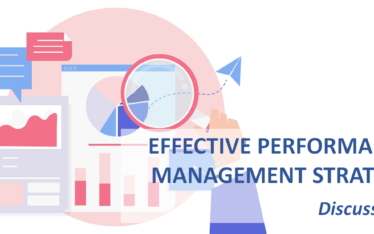PLANNING FOR PERFORMANCE MANAGEMENT

INTRODUCTION
Any organization’s performance management system aims to identify employees’ potential and development and optimally utilize it by providing the requisite support and guidance for doing well on the job. Gone are the days when performance management was only regarded as a disciplinary and assessment tool.
Today’s spectrum of performance management has widened, and all its initiatives are directed towards realizing corporate goals. Performance planning and development is one of the essential stages of performance management and enablesthe establishment of a performance agreement, which provides a framework for managing the performances throughout the year and focuses on continuous improvement and employee development.
What is Performance Management?
The performance management process is a continuous, collaborative, communication-based process where management and employees work together to strategize, plan, monitor and review the employees’ objectives and short and long-term goals to align with that of the organization’s.
Effective performance management:
- improves performance by setting employee and team goals aligned with the organization’s strategic goals
- reviews and assess progress
- develops knowledge, skills and capabilities of people
Why is Performance Management Important for an Organization
The importance of performance management goes beyond evaluation; pay raises, and promotion.
1. Set Future Goals
By consistently monitoring and managing workplace performance, managers or leaders can see potential problems. Like with any issue, early detection is the key. The sooner the problems are dealt with, the less effect they may have.
For instance, if the company observes that a particular employee is not a great team player, they may either move that employee to a position that doesn’t require collaboration and active teamwork or provide necessary training to that employee about teamwork, or let go of that employee before it turns into a big problem.
2. Set Future Goals Helps create training & development strategies
As mentioned above, the sooner a problem is detected, the better. One of these problems could be employees not being trained in the organization’s processes.
If this continues, the function, department or organization may fall apart due to oversight. However, with performance management, this can be detected. The organization could then create well-formulated training programs to turn around the issue into an opportunity for improvement.
3. Provides the clarity in the organization
A common problem that many employees face is that they are unsure of their role or what is expected of them.This lack of understanding may lead to a lack of productivity.
Therefore transparency and clarity in terms of processes, roles, objectives and goals result in increased productivity and confidence in an employee- a huge game changer! Through performance management, the organization can make this clear.
4. Provides the opportunity to exchange feedback
Often times, management communicates to employees about their performance, but employees do not get a chance to voice their concerns or frustrations.
Lack of communication in any relationship is grounds for trouble, including work relationships. Effective performance management provides a channel through which both the employer and the employee can exchange constructive feedback. In addition to gaining insight, employees feel more valued when they can voice their thoughts and concerns.
5. Increase employee retention
Performance management encourages organizations to reward and recognize their employees. Lack of recognition is a big reason most employees leave the organization. They want to be recognized and appreciated for their effort and hard work. The ability to share constructive feedback and relevant training when needed, along with rewards and recognition, can play a huge role in employee retention.
6. Encourages employee engagement
Performance management, when it actually involves employees, boosts employee engagement. A disconnect between management and employees is almost like employees going through the mundane motions of the day.
Their position becomes merely a routine job as opposed to a rewarding career. However, performance management can engage employees fully and make them feel engaged and invested in the company. This leads to job satisfaction, employee enthusiasm and loyalty, and increased productivity.
It is imperative that managers and leaders in an organization acknowledge the significance of performance management. Adopting and implementing robust performance management is the need of the hour. Though it may take time to research, plan and put together, investing your resources into developing an effective performance management strategy is well worth the effort.
7. Helps with Goal Setting & Achievements
A robust performance management system helps employees understand the company’s goals and what they are expected to do to achieve them. This means they’re aware and understand how their contributions affect the organization’s overall growth.
Therefore, performance management helps in business and organizational goal setting. Aligning teams with higher organizational goals sets major discernible priorities and direction, ensuring employees have a sense of ownership in the business.
8. Offers mentoring to increase performance
The fundamental aim of performance management is to enhance performance. It helps managers and leaders devise ways to enhance performance while providing the opportunity to lay down and discuss career prospects and direction.
Ultimately, it helps the managers or leaders to provide additional mentoring and training, which can be useful in developing criteria for promotions and advancements.
Performance Management Plans are derived from the following factors:

- Role Profiling: A role profile defines a role in terms of job responsibilities and competencies. The key result areas are jointly developed by the manager and the employee and are updated after a formal performance agreement is established.
- Objective Setting: Objectives are directly linked with an organization’s overall mission and vision and are in line with the tasks and goals of employees. Objectives are determined through discussions, negotiations, agreements and compromise. They help plan for results, not just the activities, improving overall departmental effectiveness and efficiency. Some key considerations for developing performance objectives are:
- Define short term goals which may generate long term goals
- Identify the possible challenges and issues to realize these objectives
- Create flexibility in the system for necessary changes
- Keep track of progress
- Performance measurement and assessment: The performance assessments summarize an employee’s contributions over the entire assessment period. The primary goal of a performance assessment is to recognize:
- how much the employee successfully met his goals
- how the employee delivered his performance and
- the extent to which the objectives were achieved
- Performance planning: Performance planning results from a mutual understanding between the employee and the manager of what they are expected to do and how to realize those objectives. These can also be regarded as work plans to achieve the set targets and meet the project deadlines.
- Personal development planning: A personal development plan is a learning action plan formed with the support of the manager and the organization through formal training, coaching, mentoring, or job enrichment. The plan aims to adhere to the policy requirements of continuous development and develop employees’ potential for higher positions.
WRAPPING UP
So, there you have it! Importance of performance management and why it’s crucial. A robust performance management system will proactively engage employees in the organization’s goal-setting process. It will also ensure that all goals correlate with the organization’s target. Organizations that can tie a good performance management system to better business results will quickly separate themselves from those who chose complacency over the status quo!



